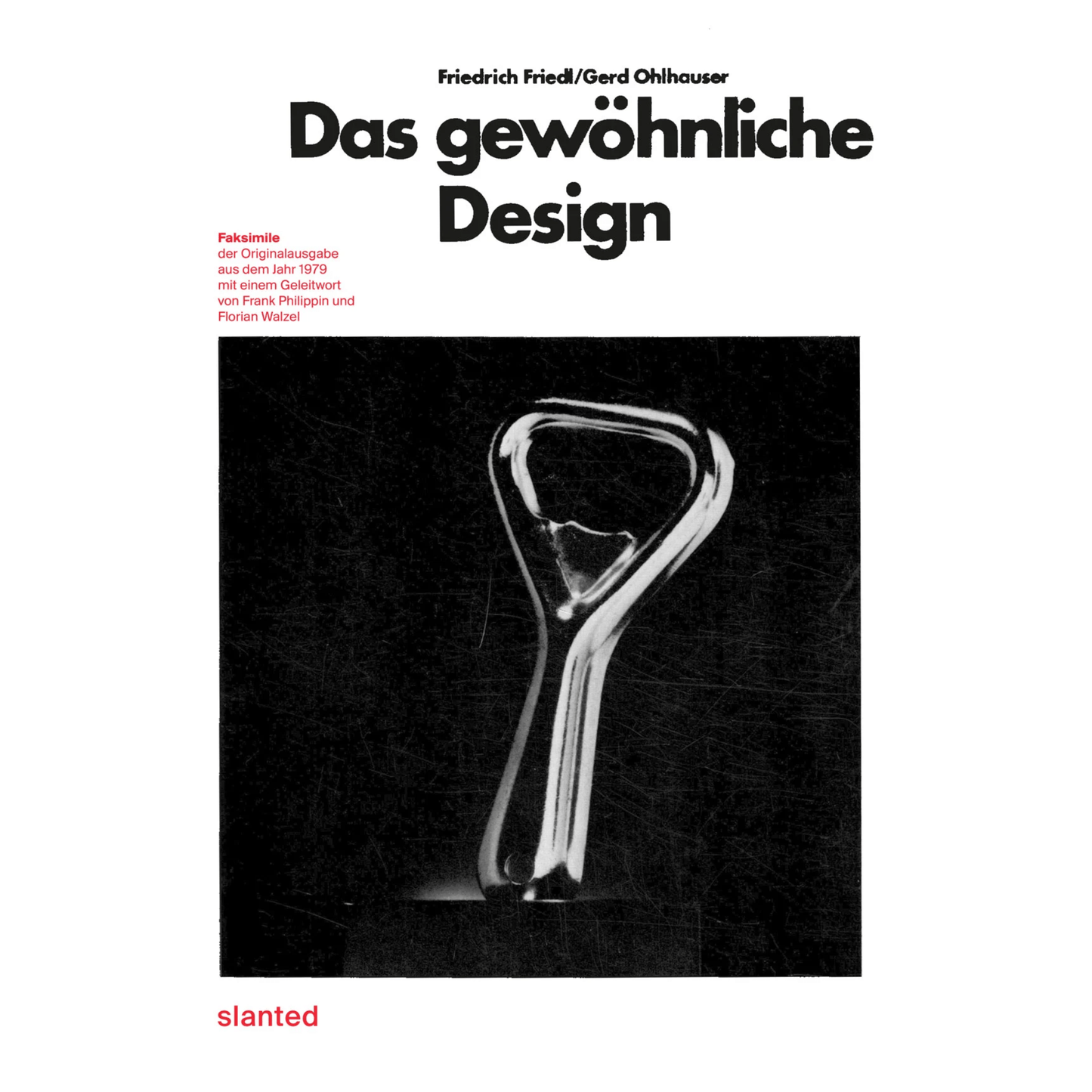Slanted
Das gewöhnliche Design
Das gewöhnliche Design
Couldn't load pickup availability
ONLINE ONLY
In 1976, a groundbreaking movement emerged from the Faculty of Design at the University of Applied Sciences in Darmstadt, led by students and young professors like Friedrich Friedl and Gerd Ohlhauser. Frustrated by the narrow perception of design as mere product styling, this innovative group sought to redefine what constitutes good design. They began to collect and showcase everyday objects—bottle openers, air pumps, bus timetables—under the provocative title The Ordinary Design.
This exhibition, featuring unremarkable items typically dismissed in design discourse, challenged the norms of traditional exhibition practices. By using velvet-covered pedestals usually reserved for “high art,” the young designers invited audiences to rethink the value of mundane commodities. The display sparked national attention and lively debates within the design community, questioning the absence of heroic or aesthetically refined qualities in these ordinary objects and mocking conventional design education.
The show’s impact led to the acquisition of the exhibits by the Rhenish Open-Air and Regional Museum Kommern, which subsequently hosted a repeat exhibition and published an accompanying catalog. This 104-page catalog featured insightful contributions from notable figures such as Bazon Brock, Peter von Kornatzki, and Adelhart Zippelius, alongside 110 black-and-white photographs that captured the essence of product normality in the mid-70s.
Das gewöhnliche Design, now newly edited by Frank Philippin and Florian Walzel and presented by Slanted, revives this important work and makes it accessible to a wider audience. This facsimile not only preserves a significant piece of design history but also reignites the conversation about the value of the ordinary in design. In an era that often prioritizes novelty and exceptionalism, this publication poses an essential question: How much of design is truly owed to the everyday?
Share


